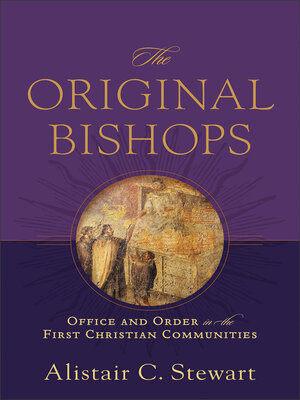The Original Bishops
ebook ∣ Office and Order in the First Christian Communities
By Alistair C. Stewart

Sign up to save your library
With an OverDrive account, you can save your favorite libraries for at-a-glance information about availability. Find out more about OverDrive accounts.
Find this title in Libby, the library reading app by OverDrive.



Search for a digital library with this title
Title found at these libraries:
| Library Name | Distance |
|---|---|
| Loading... |
A Jesus Creed 2015 Book of the Year
This work provides a new starting point for studying the origins of church offices. Alistair Stewart, a leading authority on early Christianity and a meticulous scholar, provides essential groundwork for historical and theological discussions. Stewart refutes a long-held consensus that church offices emerged from collective leadership at the end of the first century. He argues that governance by elders was unknown in the first centuries and that bishops emerged at the beginning of the church; however, they were nothing like bishops of a later period. The church offices as presently known emerged in the late second century. Stewart debunks widespread assumptions and misunderstandings, offers carefully nuanced readings of the ancient evidence, and fully interacts with pertinent secondary scholarship.
This work provides a new starting point for studying the origins of church offices. Alistair Stewart, a leading authority on early Christianity and a meticulous scholar, provides essential groundwork for historical and theological discussions. Stewart refutes a long-held consensus that church offices emerged from collective leadership at the end of the first century. He argues that governance by elders was unknown in the first centuries and that bishops emerged at the beginning of the church; however, they were nothing like bishops of a later period. The church offices as presently known emerged in the late second century. Stewart debunks widespread assumptions and misunderstandings, offers carefully nuanced readings of the ancient evidence, and fully interacts with pertinent secondary scholarship.







